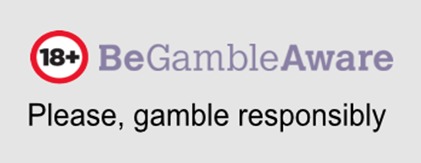

Back, lay and layback: are they different or not?

In sports betting the concepts of
"back" and "lay" usually go together and are
associated with bets placed in one direction or the other. They are very common
in matches where two teams compete, although some bookies may allow
"backear" or "lay" bets in other sporting events where more
than one team is involved.
The concepts back and lay in sports betting are
associated with what is sometimes simply known as layback, a concept
associated with experienced users as they are almost always the ones who make
use of these bets.
Before we continue, let's clarify concepts: lay and back are antonyms, but the term "layback" is used as a noun to refer to lay / back bets.
Back / lay in sports betting: what is it?

When we talk about lay and back, we refer to a
type of betting in which one bets against or in favor of a team. In other
words, you bet on a team to win or lose. Its essence is very simple, but
the way to extract the full potential of back / lay bets is what makes it
predominantly professional bettors who get the most out of this type of bet.
Something very important to understand how lay
betting works is that you bet the amount you want to win, not the amount you
want to risk. This very basic concept is the one that often leads those who
make the leap from other types of bets to lay betting to make a mistake. When
they make a mistake in the amount they put at stake, the result is far from the
expected one.
To succeed with the lay in sports betting, it
is essential to follow a simple mathematical rule to obtain the desired amount
we want to win. And, yes: the amount we "want" to win also depends on
a formula, because it is not only what we want to win, but what we can
afford to bet to seek victory. Any bet outside these margins is not at all
guaranteed to be viable in lay betting.
How do we calculate the layback?
Winnings = (Desired Amount x Odds) - Desired Amount
Pros and cons of lay and back bets

Going by layback in betting has its advantages
and disadvantages. Main advantages:
- There is a higher probability of winning if an event is predicted not to occur.
- They offer a wider profit margin than the lay odds, despite having to deduct the part that the bookie takes.
- Only the money wagered is at stake.
However, it also has its handicaps:
- We do not have this possibility in all bookies.
- It is not within the reach of an inexperienced user, although the concept is easy to understand.
- We can expose ourselves to the risk of not having enough liquidity and not being able to layback.
How to approach a layback
bet well

Back and lay bets are, respectively, bets
placed for or against a team winning. However, something that looks like
a 50-50 that we can leave to chance is not something that depends only on luck.
The basic thing if we want to stop losing
money is to understand that a layback bet allows us to obtain effective
profits as long as we know how to keep our bankroll under control. Otherwise,
we will not avoid losing and we will expose ourselves to a lack of funds to
continue betting.
Therefore, it is essential to set a ceiling on
the amount we bet, taking into account the necessary amount we want to
win and what is our stack.
But timing is crucial in this type of betting,
whether we bet for or against. Normally, professional users tend to place their
back / lay bets at strategically chosen times: for example, after 75
minutes if there is a draw, or in the last minutes if one team is ahead, as you
will be more likely to place a back bet in favor of the advantaged team.
How to have a better chance of squeezing the potential
of the bet? By doing a good analysis. As it happens in games such as poker,
having a great analytical capacity to improve decision making is crucial. Our
judgment will be key to support the decision to make a back or lay bet at a
specific moment of the event.
This is the main reason why layback bets are not
suitable for inexperienced users. You don't get that analytical ability out
of thin air: it takes experience and experience to be able to correctly judge
the odds of getting the most out of a back/lay bet in order to get it right. If
you don't have it, your decision making will be inadequate, and you will be
exposed to a constant stream of losses.
You may also like

Success Stories in Sports Betting
Success Stories in Sports Betting: Inspiration and Winning StrategiesSuccess Stories in Sports BettingSports betting isn’t just about luck; it’s about strategy, knowledge, and sometimes taking bold...

Paroli system in sports betting: what is it?
The Paroli system is a strategy widely used by fans of some casino games, such as roulette. However, despite being well known in the field of gambling, the Paroli system is perfectly applicable to...

Who's the world's best sports bettor: 5 famous sports bettors
The sports betting industry has been home to names from all walks of life. Nowadays, more and more people are interested in the history of the best professional sports bettors and there are true le...









